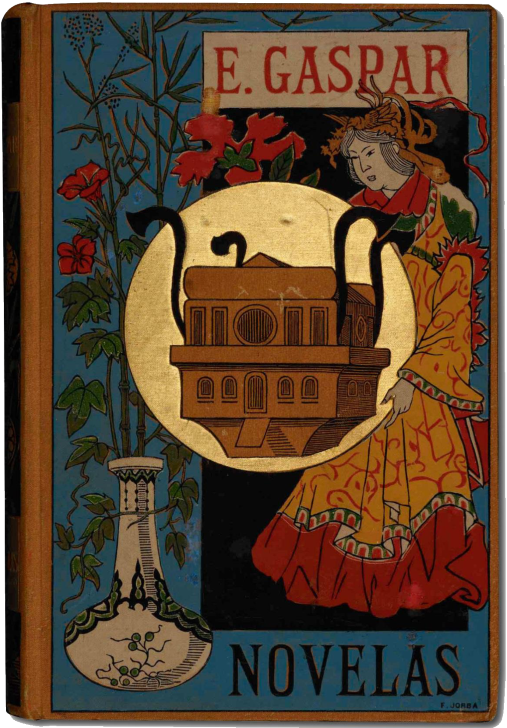El Anacronópete
- by Enrique Gaspar
- Novel
- Science Fiction, Comedy
- Adults
- Debatable Time Travel
- Spanish
- El Anacronópete [He who flies backwards in time] by Enrique Gaspar, in Novelas (Daniel Cortezo, 1887).
Mad scientist Don Sindulfo and his best friend Benjamin head to the past in Sindulfo’s flying time machine along with Sindulfo’s niece, her maid, a troop of Spanish soldiers, and a bordelloful of French strumpets for madcap adventures at the 1860 Battle of Téouan, Queen Isabella’s Spain, nondescript locales in the eleventh and seventh centuries, 3rd-century China, the eruption of Mt. Vesuvius, and a biblical time shortly after the flood.
After taking a year of Spanish at the University of Colorado, I undertook a three-year project of translating Gaspar’s novel to English, which is available in a pdf file for your reading pleasure. Even with the unpleasant twist at the end, it was still a fine, farcical romp through history.
After taking a year of Spanish at the University of Colorado, I undertook a three-year project of translating Gaspar’s novel to English, which is available in a pdf file for your reading pleasure. Even with the unpleasant twist at the end, it was still a fine, farcical romp through history.
—Michael Main
—Poco á poco—argumentaba un sensato.—Si el Anacronópete conduce á deshacer lo hecho, á mi me pasrece que debemos felicitarnos porque eso no permite reparar nuestras faltas.
—Tiene usted razón—clamaba empotrado en un testero del coche un marido cansado de su mujer.—En cuanto se abra la línea al público, tomo yo un billete para la vispera de mi boda.
translate
“One step at a time,” argued a sensible voice. “If el Anacronópete aims to undo history, it seems to me that we must be congratulated as it allows us to amend our failures.”
“Quite right,” called a married man jammed into the front of the bus, thinking of his tiresome wife. “As soon as the ticket office opens to the public, I’m booking passage to the eve of my wedding.”
Tags
(22)
- Time Periods
- Ancient History (3000 BC to AD 476: Bronze/Iron Ages): China (ca. AD 220), the Mt. Vesuvius Eruption (AD 79), the Genesis Flood (BC 3308).
- Middle Ages (AD 476 to 1454): The Byzantine Empire (AD 690).
- Early Modern History (AD 1454 to 1600): Granada (1492).
- Circa AD 1800 to 1899: The Paris Exposition Universelle (1878), the Battle of Tétuoan (1860).
- Timeline Models
- Time Travel Methods
- Themes
- Ex Nihilo History: Among other things, the travelers cause [tag-3254 | Isabella] to give an audience to [tag-3134 | Columbus].
- Travel to the Past Unintentially Makes You Younger: Without a series of electrical shocks, the travelers grows younger and younger until they dwindle away.
- Unusual Aging
- Real-World Tags
- Fictional Tags
- Groupings
Variants
(1)
- El Anacronópete [He who flies backwards in time] by Enrique Gaspar, in Novelas (Daniel Cortezo, 1887).
Translations
(3)
- English.
The Time Ship: A Chrononautical Journey by Enrique Gaspar (Wesleyan University Press, July 2012). - English.
The Anacronópete by Enrique Gaspar (CreateSpace Independent Publishing Platform, August 2012). - English.
El Anacronópete by Enrique Gaspar (StoryPilot Press, February 2014) [e-book] [Accessed at ITTDB on 16 April 2022.].
